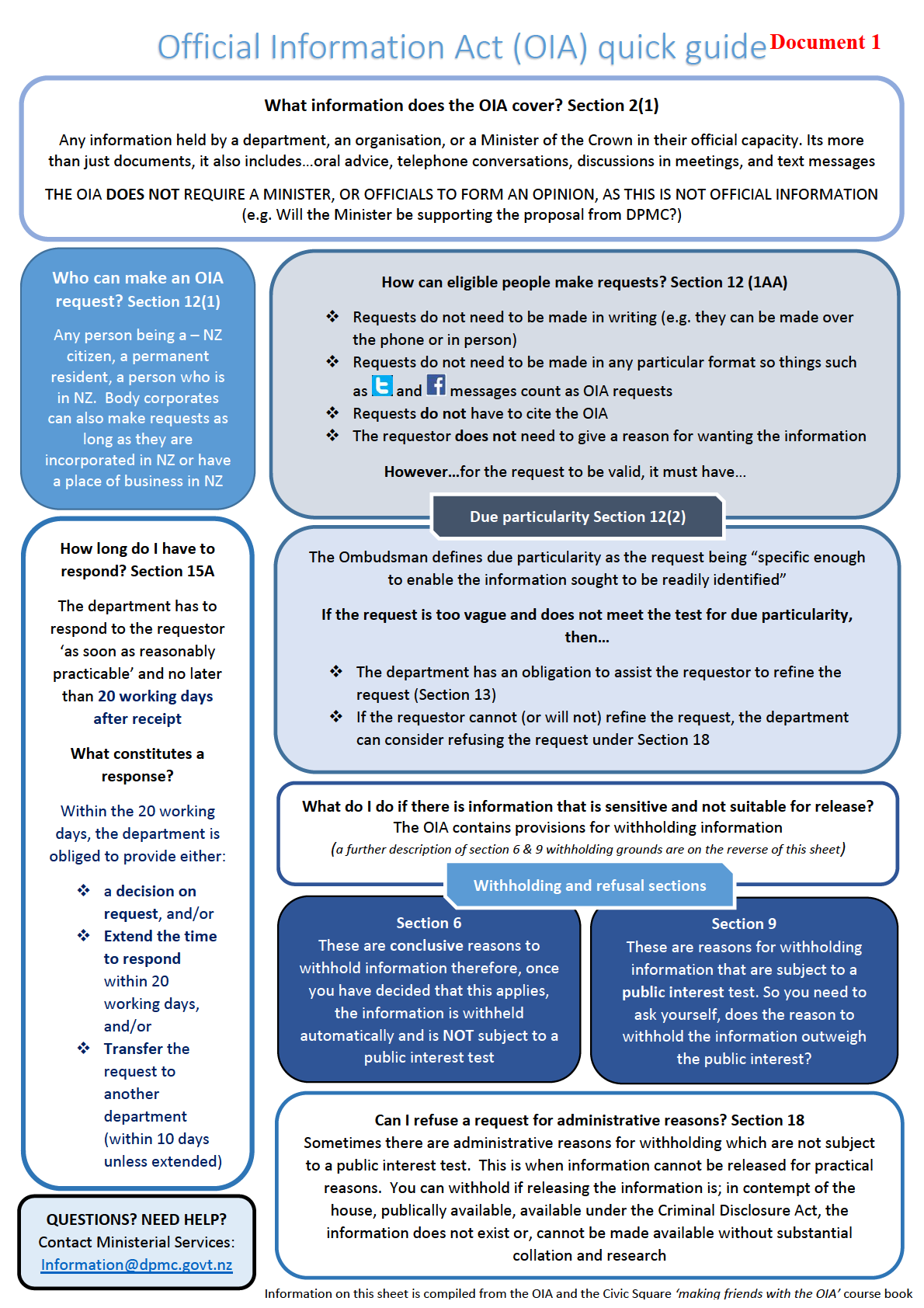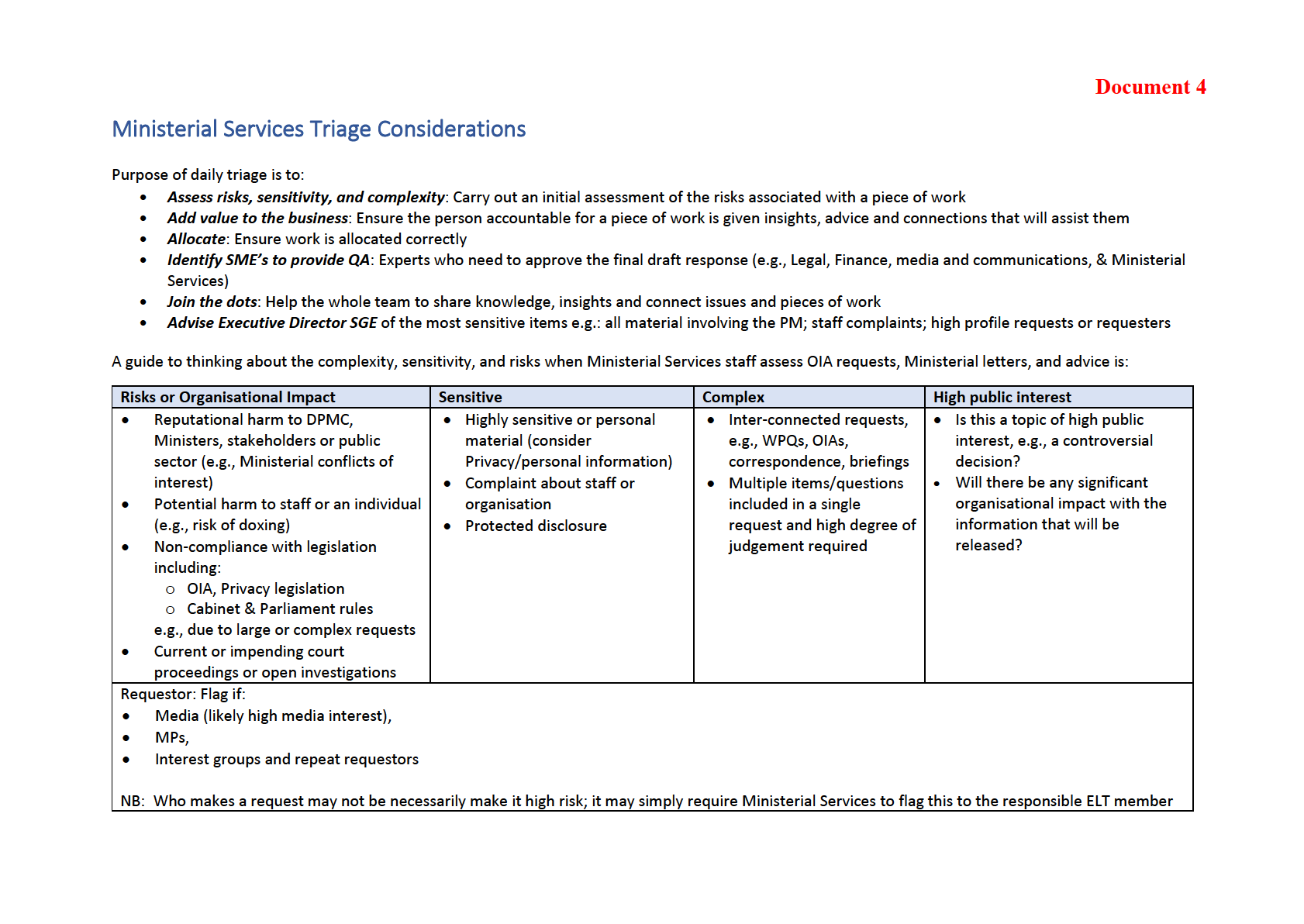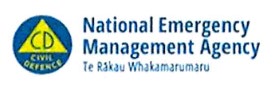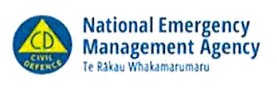
Act
Information
Official
the
under
Released

Act
Information
Official
the
under
Released

Act
Information
Official
the
under
Released


Act
Information
Official
the
under
Released

Act
Information
Official
the
under
Released

Act
Information
Official
the
under
Released
Act
Triage process and outcomes
Ministerial Coordinator will provide an email to the Lead Advisor and Manager Ministerial Services each day (last thing) and include all received OIAs and
other correspondence (attach the incoming email with the request)1.
Lead and Manager will review against the triage criteria and identify prior requests of a similar nature.
Each new item wil be discussed in the next daily triage meeting (e.g., items received Monday wil be discussed on Tuesday)
OUTPUT - Initial note for the MOTO stickies covering:
Information
•
Assessment of risks, sensitivity and complexity
•
insights, advice and connections that will assist them
•
SME’s to provide QA: Experts who need to approve the final draft response (e.g., Office of the CE, Legal, Finance, media and communications, &
Ministerial Services)
•
Join the dots: Help the whole team to share knowledge, insights and connect issues and pieces of work
Triage note template
Official
Ministerial Services Triage Note:
•
Requester details
the
•
MS has noted the following risks/sensitivities
(optional and should include a note of need for urgency if appropriate).
•
MS notes the following related workflows and prior response:
•
________
•
MS notes
(any value add – e.g., the PM has publicly responded to this before – link)
•
MS recommend
(comment on approach).
under
1 This wil mean a change for the team as the coordinator wil not be available to dispatch (external y) responses which are approved/finalised after 4.30pm.
Released
Act
Complaints
Complaints take many forms and need to be carefully considered.
A complaint may be about a service or the actions of a staff member that has resulted in some form of harm or detrimental impact to the complainant.
A complaint needs to be treated seriously and considerations should be made whether it needs to be handled independently.
• Complaints should be discussed with the Manager Ministerial Services
If the complaint includes an OIA then the two elements may need to be treated separately.
Complaints about members of Parliament should be referred to the Cabinet Office (via Manager, Ministerial Services).
Information
Protected disclosure
A protected disclosure is from an employee reporting concerns about a serious wrongdoing in the Department. NOTE: if a protected disclosure is made to
the Minister, it may be about an entity other than DPMC.
Serious wrongdoing includes:
• an offence
Official
• a serious risk to public health, public safety, the health or safety of any individual, or the environment
• a serious risk to the maintenance of the law, including the prevention, investigation and detection of offences and the right to a fair trial
• an unlawful, corrupt or irregular use of public funds or public resources
the
• conduct that is oppressive, unlawful y discriminatory, or grossly negligent, or that is gross mismanagement, by a public sector employee or a person
performing a function or duty or exercising a power on behalf of a public sector organisation.
If we see a protected disclosure in the inbox or identify it during triage:
• escalate to Manager Ministerial Services to inform the Deputy Chief Executive Strategy, Governance and Engagement.
under
Released
Document 5
Quality Assurance Checklist
Purpose
To produce checklists for the various QA aspects involved in each workflow.
This checklist will serve as a tool/quick reference guide for DPMC when providing QA on others
work, and when considering new workflows.
Ensuring consistency in approach to QA and provide assurance that al matters have been checked
(i.e., key dates, administrative steps and al questions answered).
Act
Definitions
1. Proofread
a. Check greetings
b. Confirm dates, email/physical address, and title are correct
c. Check structure, grammar, and tone of the response
d. Check general formatting of document
e. Check that response is tailored to the audience
2. Quality Assure (QA)
a. *QA includes a proofread
Information
b. Check that concerns/questions raised have been addressed in response
c. Confirm internal consultations are completed, and consistent with triage notes
d. Check that coversheet appropriately addresses matters raised, and provide a high level
summary of any risks involved.
e. Check that draft contains a paragraph advising of the right to complain to the Office of
the Ombudsman
Official
the
under
Released
Preliminary Checks
Advisers should do the fol owing preliminary checks when a piece of work has been assigned to
them, prior to commissioning
Things to Check
Notes
- If you believe it should be logged as another
Read the request
type of work (i.e. if an OIA request has been
logged as correspondence), please flag it with
the Lead Adviser or Manager immediately
Act
- For due dates, please use the official
information calculator
(www.ombudsman.parliament.nz/agency-
Are the logging dates correct?
assistance/official-information-calculators)
- Transfer deadlines: no later than 10 working
days after the day on which the request is
received per section 14 of the OIA
- MOIAs Transfers are due to the Minister’s
Office 2 working days before the actual
deadline
Are internal deadlines, correct?
- MOIA Responses are due to ELT 2 working
Information
days before it is due to the Minister’s Office;
and are due to the Minister’s Office 1 week
before the response is due
Is the request document correct?
- Make sure that the request document
corresponds to the title of the request
- While sign outs can change midway through
Is the sign out team and manager, correct?
an OIA, it is important to ensure it has been
Official
logged against the right business unit/ELT
member
Details of requestor*
- Check that it corresponds to the request
the
*For Ombudsman Investigations, please also check that the fol owing details are correctly logged:
• Details of Ombudsman Investigator
• OIA number
• Indicative Manager’s Sign Out
- Run a search on MOTO to see if there have
been a previous similar request, and what the
under
Any previous similar requests?
approach was
- Save the links of the previous requests in the
stickies for reference
Should Communications be looped in?
- Talk to Manager, Ministerial Services if unsure
- E.g. if the request asks for documents
Does Legal have to be involved?
containing privileged materials
- Where requests seek personal information
- A PAG search may be required if the request
asks for briefings provided to the Prime
Released
Minister on a certain matter
Does this need a PAG search?
- Check with Advisers cleared to conduct PAG
searches if unsure:
o Anna Whiskin
o Viv Tan
Not relevant to your request
Act
Information
Transfers & Extensions
This QA checklist applies to both Departmental and Ministerial OIA Requests. The adviser should
assess whether communications need to be involved at commissioning.
Relevant Person
Purpose
- Proofread
- QA
Official
- If it is a partial transfer, check that the
remaining part(s) of the request is addressed
Adviser or Senior Adviser, Ministerial
the
Services
- Check if the correct section of the OIA is used
- Check length of extension, and confirm it
against estimated timeline
- Check wording for an extension of transfer
deadlines (if necessary)
under
Released
Official Information Act 1982 (OIA) Requests
This QA checklist applies to both Departmental and Ministerial OIA Requests. The adviser should
assess whether legal and/or communications need to be involved at commissioning.
Relevant Person
Purpose
- Proofread
- QA
- Check if information has been withheld under
Senior Adviser, Ministerial Services
the appropriate section of the OIA
Act
- If it is a full/partial refusal, check if it is made
under the appropriate section of the OIA
- Where request involve PAG materials
Policy Advisory Group
- Confirm the completeness of the scope
- Confirm documents in/out of scope is correct
Manager, Ministerial Services
- Where necessary
- Proofread
SME, Relevant Business Unit
- QA
- Fact-check use of information, and
information proposed to release/withhold
SME’s Manager, Relevant Business Unit
- Approval on behalf of Business Unit
Information
- Where request involve privileged or
Legal (where applicable)
procurement information
- Where requests are high-risk
- Where requests seek personal information
Chief-Of-Staff/Chief Adviser*
- Final checks before it goes to the relevant ELT
CPR: Hannah Kerr
member for sign out
Official
COVID-19: Julie Knauf
Implementation Unit: Maari Porter
*If the request is for DPMC corporate-related
National Security Group: Christopher Gray
information, this step is not necessary
NEMA: Anthony Richards
the
Communications for oversight (where
necessary)
- Where matters raised have been in the media
CPR: Gabriel e Tully and Sarah Berry
or may result in media attention
PMO: Catherine Delore
National Security Group: Cherie Blithe
under
[Remainder of this Document does not relate to Official Information Act requests
and is not relevant to your request]
Released

 Document 6
Document 6
UNCLASSIFIED
Release of staff personal information under the Official Information Act.
This guide covers how to treat staff names, phone numbers (DDI’s and mobiles) and email
addresses. As a general rule, both the Ombudsman and the Privacy Commissioner expect names of
public service staff, their direct dials and their emails to be released unless there is clear evidence of
Act
possible harm to the individual. Redacting work mobile numbers is usual y justifiable to ensure
people are not contacted outside of working hours.
It is a common misconception that names of ‘junior’ or ‘administrative’ staff do not need to be
disclosed because there is no public interest in disclosure of that information. However, a harm
needs to be established before the public interest in release is considered. If there is no harm, the
information must be released, regardless of whether there is a public interest in doing so.
Privacy
Section 9(2)(a) of the OIA applies if withholding is ‘necessary to protect the privacy of natural
persons’. The Ombudsman has explained their general position that withholding staff names, when
Information
all that would be revealed is what they did in their official capacity, is not generally necessary.
“
The names of officials should, in principle, be made available when requested. All such
information normally discloses is the fact of an individual’s employment and what they are
doing in that role. Anonymity may be justified if a real likelihood of harm can be identified
but it is normally reserved for special circumstances such as where safety concerns arise.”
In particular, it will not usually be necessary to withhold staff names or emails in order to protect
Official
their privacy. A name is personal information about an individual, but, on its own, that information is
not inherently private. Nor is the fact that a person works for an agency, or what they happen to do
in that role, inherently private.
the
A public sector employee should reasonably expect a degree of transparency around what they have
done in their official capacity. There is usual y no need to withhold employee DDI’s, work mobile
numbers and work email addresses where it is generally available (for example, because it forms
part of staff email signatures which are routinely sent outside the agency), or able to be inferred. For
example, agency email addresses often follow a standard formula from which staff email addresses
may be readily inferred, if their names are known.
under
Where the information is not generally available or able to be inferred, there may be a sufficient
privacy interest to engage section 9(2)(a), particularly for DDIs and extensions, and work mobile
numbers. Work mobile numbers in particular may enable staff to be contacted outside business
hours, which would intrude on their personal time. Email contact may be less intrusive than
telephone contact, because people can choose if or when to respond to an email.
The sensitivity of any of this information wil depend entirely on the context—whether it would, in
combination with other information, reveal something private or personal about the individual, or in
some other way intrude on their privacy.
Released
Signatures
Assuming a signature is legible, its disclosure might reveal an identity. Even if it isn’t, it could be
linked to other documents the person has signed. However, that alone is not anything inherently


UNCLASSIFIED
private, and so it is not ordinarily necessary to withhold signatures and releasing signatures does not
necessarily facilitate identity fraud. Usually a signature alone isn’t sufficient – the would-be fraudster
needs other information (credit card info, date of birth, drivers license number, etc) to do malicious
things with a signature.
Act
Improper pressure or harassment
Section 9(2)(g)(ii) applies if withholding is ‘necessary to . . maintain the effective conduct of public
affairs through … the protection of [Ministers, members, officers or employees of agencies] from
improper pressure or harassment’.
For this section to apply, there should be a reasonable expectation that:
• disclosing the name(s), email, or phone number would lead to improper pressure or
harassment; and
• this would have an adverse impact on the relevant staff (for example, by causing stress or
Information
anxiety), and therefore the agency’s ability to do its job.
While there is no onus of proof on an agency to produce evidence in support of a predicted harm,
“[any person]
who alleges that good reason exists for withholding information would be expected to
bring forward material to support that proposition”. A requester being a persistent or recurrent
complainant is unlikely to meet the threshold in the absence of other indications of potential harm.
Official
General factors to consider when assessing whether to withhold this information:
Factors that may affect the need to withhold staff names include the nature and content of the
associated information include:
the
• whether the information is already known to the requester;
• whether the information is in the public domain;
• the seniority of the staff;
• their degree of responsibility;
• the nature of their role;
under
• their views;
• the potential for further dissemination;
• previous conduct by the requester or others to whom there is a reasonable chance the
information will be disclosed; and
• the likely use of the information.
Consulting with other agencies on release of their staff personal information:
DPMC/NEMA needs to consult with the relevant agency regarding its employees and whether
names and contact details should be withheld. We recommend you do this by saying:
Released
DPMC/NEMA intends to release the names of all [agency staff], including email addresses
and phone details in the attached documents. If [agency] considers there is a real likelihood
of harm if the name and contact details were released, please advise by [x date]. If no
response is received we wil assume [agency] has no objection to the release.


UNCLASSIFIED
Rationale:
If a business unit makes a decision to redact the names and/or contact details of their staff then the
following information will need to be sent to Ministerial Services for their records:
Act
• which specific section of the OIA applies; and
• reasoning or rationale for what the harm would be to the individual staff member if their
name and/or contact details were to be released.
A record is important as it enables Ministerial Services to raise the relevant risks with the decision-
maker who signs out the OIA and will ultimately own the risk and will need to justify the redactions if
a particular OIA goes to the Ombudsman.
The reasoning can be a short sentence or summary of the risk and potential harm. Examples include
(but are not limited to):
• The project being worked on is high risk;
Information
• The link between the individual and a particular project or piece of work could disclose their
security clearance;
• The requester is known to have a history of harassing employees.
For further information:
The Ombudsman has released a specific guidance document on names and contact details of staff
which you can access here if you would like more information.
Official
If there are questions about how or when these thresholds may be met in specific cases, please get
in touch with Ministerial Services.
the
under
Released
Document Outline












